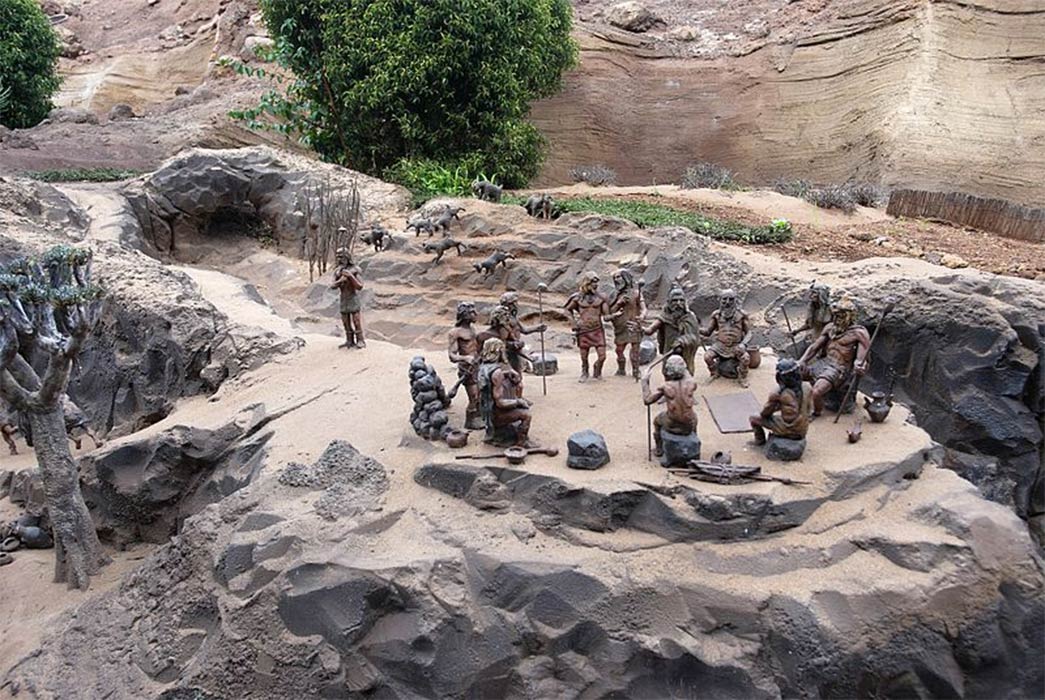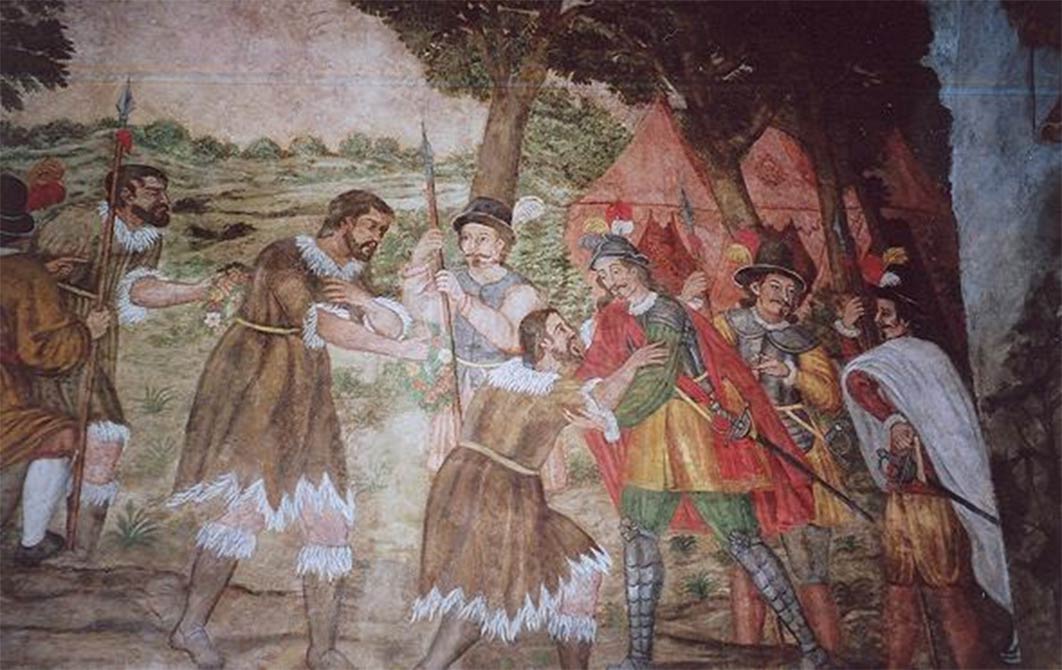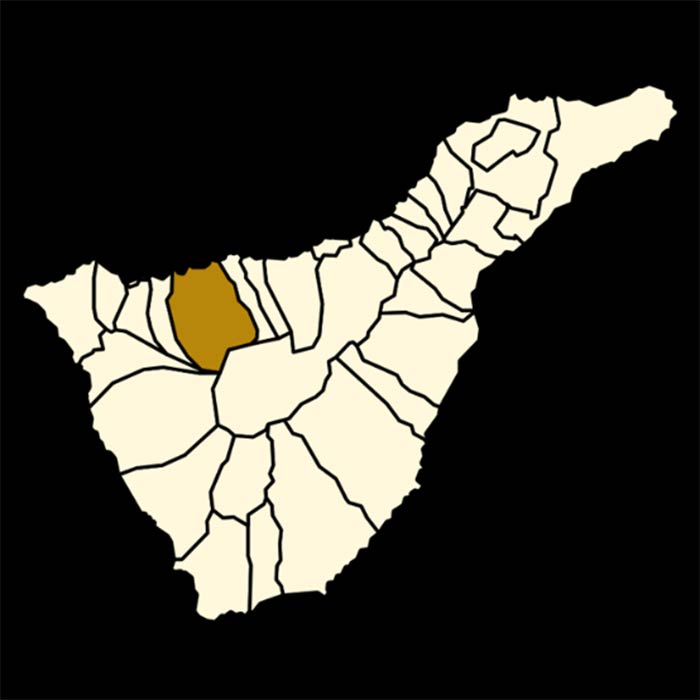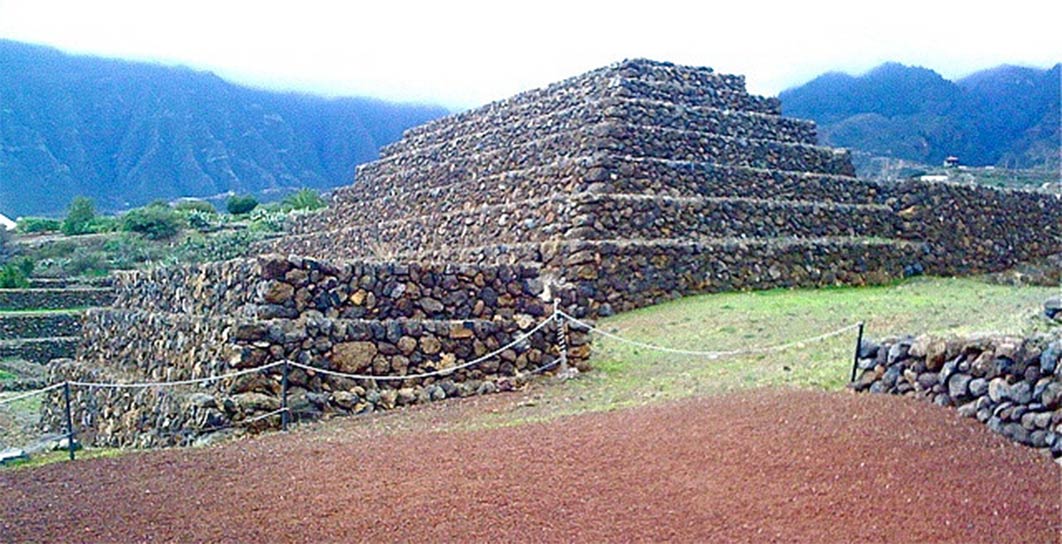
The Fan Pyramid of Tenerife, A Guanche Stone Solstice Marker
A peculiar pyramid with a ‘fan structure’ stands as an ancient stone solstice marker in Icod de los Vinos, a municipality on the island of Tenerife, in the Canary Islands (Spain). The precolonial inhabitants of Tenerife came to be known as the Guanches, sharing common origins with the Berbers of the North African coastline, probably the northern Africa Amazigh clans, mainly from Tunisia, Morocco, Mauritania and Libya. It is believed that they arrived on the archipelago some time during the first millennium BC.

Guanche kings of Tenerife surrendering to Alonso Fernández de Lugo. (Public Domain)
Icod de los Vinos
The Municipality of Icod de los Vinos was one of the nine Guanche territories, before the Spanish conquest, which came to an end in Northwest Tenerife, Canary islands, in 1496. The Guanche name for the region, Benicode means "place of the black, or burned, stones” and refers to the abundant lava fields and black sands of the region which houses a very valuable archaeological, ethnographic, cultural and natural heritage. From its caves, such as the Cho Gaspar, abundant aboriginal material has been recovered (charcoal, wood, pottery shards, bones and skeletons) dating from the eighth century BC, comprising some of the oldest artifacts from the archipelago.

Location of the Icod de Los Vinos Municipality on Tenerife (Júlio Reis/CC BY-SA 3.0)
In addition, there are important petroglyph sites, solstice markers, and also stepped pyramids. Although not as well-known as the very famous pyramids of Güimar, or Chacona, the northern municipality is home to a good handful of them. The first ones came to the fore due to the great Norwegian anthropologist Thor Heyerdhal, who with the help of his friend Fred Olsen, would turn them into an ethnographic park, a great cultural attraction for the island and a powerful magnet for thousands of tourists.

One of the pyramids of Güímar (Image: Colin Moss)
Step Pyramids of Güimar
Much has been written about Tenerife’s step pyramids origin and function, a subject widely debated, since three astrophysicists from the Canarian Astrophysics Institute (IAC, C. Esteban, J. A. Belmonte and A. Aparicio) back in 1991 considered them “an astronomically orientated pyramid complex”. In their extensive study they also demonstrated that the Güimar pyramids can be used to determine the date of the summer solstice with very high precision, in addition to the winter solstice. They referred, among other things, to the double sunset that occurs on the southern edge of the Caldera de Pedro Gil on every June 21, visible and perfectly aligned with three of the five Güimar pyramids. For the Guanches the sun, referred to as Magec, was one of their most important gods, the one who provided life, the energy that ripened their crops and strengthened their goats. That is why they continuously observed it, knowing by means of marks on mountains, sacred stones and great pyramids, its evolution through the sky according to the yearly seasons.




